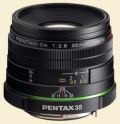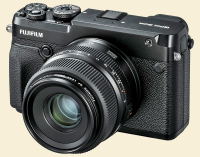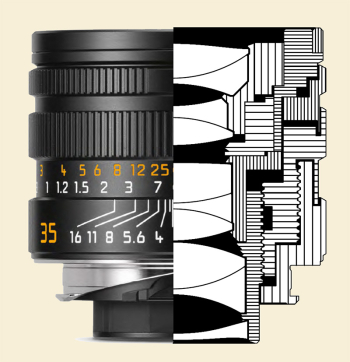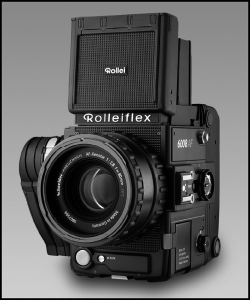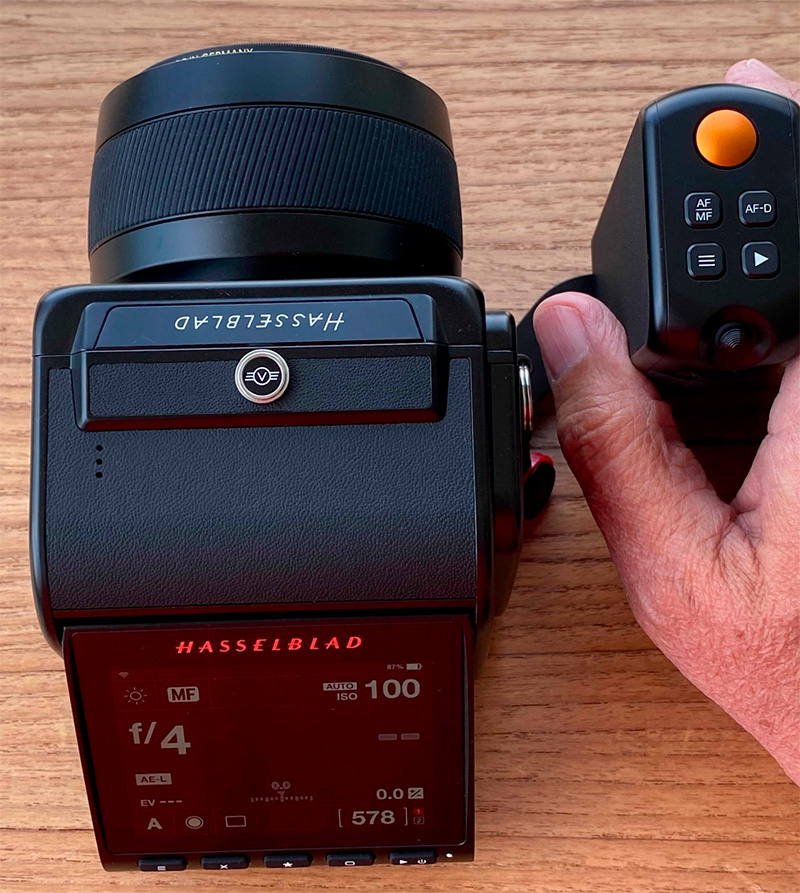You're going to laugh at me. But here's how my reasoning went:
A few weeks ago, when we discussed it, I decided to take a stab at learning touch-typing. I've been having increasing trouble with typing; I've slowed from 60 WPM in my forties to 43 WPM now, and on bad typing days it actually discourages me from writing. And I love to write. One problem is that as my fingers fly around the keyboard, I more often hit two keys instead of one now. So my error rate has been rising. I reasoned that touch-typing might alleviate some of these problems, and perhaps forestall further decline.
It was an anniversary, too. I was turning 64, and I got my first typewriter as a birthday present when I was 14. Half a century had gone by. Which seems incredible (somehow humans have trouble believing that they grow old).
At age 14, when I got that typewriter, my father described home-row touch typing to me and then left me alone. I tried to type that way for a while, but it was frustrating and slow. So I made an impulsive decision—to forego home-row touch typing for just a few minutes and hunt and peck, on account of it was faster and more convenient. I recall I wanted to learn to write; my primary goal was not to learn to type. I figured I'd just hunt and peck a bit while I was messing around, and get back to learning proper typing after a hour or two, or a day or two.
Well, of course I never did get back to it.
KAS
A while back, I forget how long—eight or ten years maybe—I got interested in keyboards, because I was having a touch of RSI-type hand pain. I tried a few and settled on the Microsoft 4000 Ergonomic keyboard, which was big and clunky but a bit more comfortable for me than the elegant-looking little Apple keyboards I had previously used.
One keyboard I got interested in at that time was the Kinesis Advantage, a strange-looking contraption with the keys clustered in "key wells" at either end of the keyboard, with "thumb clusters" to shift some of the work of typing to the traditionally underused thumbs. (Here's what it looks like.) I requested a review sample, but Kinesis suggested that if I wasn't already a touch typist I was unlikely to appreciate the experience, and they demurred. I let it go.
Cut to now. Since I was going to learn touch typing from scratch anyway, I thought to myself (that's the way I think, to myself), why not learn it on that Kinesis keyboard? So I ordered one.
I had to think twice about it; the bloody things are expensive. It was scheduled to arrive on my birthday, so I figured I could rationalize it as being a birthday present to myself. Then it arrived two days early, which was a nifty bit of parallelism, because my grandmother's typewriter arrived two days prior to my 14th birthday, and my parents allowed me to open it early. So I got the Kinesis Advantage2 exactly 50 years to the day after I got my Adler Satellite 2001 electric portable, my first typewriter.
But in all my research on touch-typing (I got rather immersed), one thing I kept reading over and over again is that you shouldn't look at the keyboard. "No matter what you do." "The first rule of touch typing is...." Well, in my customary five-fingered way of hunting and pecking—let me refer to this as "pecking" for short—I look at the keyboard frequently. So I found it almost impossible not to look at the keyboard of the Kinesis as I assayed my early clumsy attempts at this new skill. Worse, when I did manage to keep my eyes off the keyboard, I found my mind going through the following process trying to locate a given letter: first, picture in my mind how I would hit that letter in pecking mode; see where the letter was, visually, in my mind; then translate that location mentally to the home-row method, figure out which finger should be hitting it, and find the key that way. By this ponderous mental method I was forging forward at, I don't know, a blistering half-word a minute, maybe.
I exaggerate. But not by much.
But the Kinesis is programmable. I thought, hey, look at this, you can switch to an entirely different keyboard layout with the touch of a couple of buttons. That would solve the problem—looking at the keyboard wouldn't do any good if the letters were in different places, right? It would be like typing with blank keys.
Now, you would think that, having made a fatefully impulsive decision 50 years ago when learning how to type, I would, in my august maturity, be a little leery of impulsive decisions when it comes to re-learning how to to type.
But no, turns out.
I switched the Kinesis to the Dvorak layout.
I figured I was just messing around, and could revert to QWERTY in a day or two. No big deal.
That was two weeks ago. The Kinesis has not come out of Dvorak mode since. I really had no intention of this when I started out; in fact I barely knew the Dvorak layout existed (I know all about it now, as you might expect).
Quixotic?
So that is a long-winded explanation of how come I am attempting to learn a.) touch typing, b.) the Dvorak layout, and c.) the oddball Kinesis keyboard...all at the same time. Yes, this is very Mike, I know. Yes, we all know the possibility of bailure is sky-high.
However, I've been working very hard at it. Two or three hours every day, sometimes even a little more. I've already put in my first hour this morning.
It is going...slowly. Ever so slowly. Agonizingly slowly. Frustratingly so. But it's the struggle that's important, right? Like learning to play a musical instrument. I'm challenging my mind. Burning new synaptic pathways.
Along those lines, I've been forced to admit to myself the possibility that the old gray matter has stiffened like an artery and no longer has the flexibility to cope with being thus rewired. As you know, I am wont to refer to the likes of us as Photo Dawgs, and despite my steely determination I am forced to concede that maybe the old saw is true and that you cannot in fact teach an old Dawg a new trick. The thing is up in the air. My little fingers are taking great umbrage at being called upon to work all on their own for the first time in memory. My mind is stubbornly refusing to learn to coordinate my fingers on the home row (with which you do 70% of your typing in Dvorak, versus 29% in QWERTY).
On the other hand, there is just the faintest glimmer of light at the end of the long tunnel. I can barely see it; you know that trick, in the gloaming, as night arrives, how you can concentrate on something but look at it with your peripheral vision and somehow see it better? The light at the end of the tunnel is like that right now. But it's there. I think it's there. I'm pretty sure it's there. Sometimes I type a letter entirely by reflex, without thinking of it in the slightest.
Mostly I have to think with great effort about nearly every move. At two weeks I've learned the letter keys and the basic punctuation marks, and how to shift. And my speed has crept up to fifteen words a minute in the best case, although I can almost not type with 100% accuracy at any speed or any amount of concentration.
The effort has laid bare some of the infirmities of my brain, which is interesting. Here's one such oddity: I've observed that each day, I seem to have a different blind spot. One day I will just not be able to separate N and T in my mind; the next day I will find N and T somehow sorted, but have a sudden essential confusion regarding O; the day after that I will abruptly forget how to type R, with which I had previously had no trouble. Mental hiccups of some sort, seems like.
That's plenty of this for now. Suffice to say I am typing this post the old way, on the old keyboard. It would have taken me till next Tuesday to type it under the new regime. My objective is to reach the point that I can go cold turkey, and set the old keyboard aside for good, and do all my work on the new keyboard while touch-typing. My ultimate goal is to achieve my current 43 WPM, only with ease and comfort, less thought, greater relaxation, and fewer errors. My stretch goal—the Grail, as it were, the chalice—is to do so while returning to my peak speed of 60 WPM. The possibility of the latter, at this moment, seems, shall we say, remote.
For the time being, however, I persist, redoubtable and indefatigable. I still have another two weeks before I lose the privilege of returning the keyboard. Come, Sancho! On, Rosinante! A fire-breathing dragon or a windmill yonder lies!
Mike
Gear o' The Week:
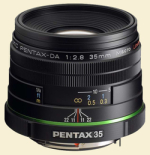
If I could shoot with any 50mm focal-length-equivalent lens, it would not be unobtanium: it would be the relatively modest, relatively older HD Pentax 35mm ƒ/2.8 DA Macro Limited on APS-C (it has recently been revised with new coatings). I don't know how it measures and couldn't care less. If you care first and foremost about pictures, especially prints, it is one beautiful lens. Luverly. As a normal too. This link is a portal to Amazon, through which most anything you purchase will be credited to TOP. As an Amazon Associate I earn from qualifying purchases.
B&H Photo also has the Magic Macro, naturally.
Original contents copyright 2021 by Michael C. Johnston and/or the bylined author. All Rights Reserved. Links in this post may be to our affiliates; sales through affiliate links may benefit this site.
(To see all the comments, click on the "Comments" link below.)
Featured Comments from:
Steve Rosenblum: "The good news is that all the research on aging brains and neuro-plasticity seem to show that stretching your brain by making it do something new like this is very good for it."
Mike replies: That's really half the reason I'm doing it. Also, curiously, my regular typing has speeded up quite a bit.
Dillan: "What I want to know is: how the heck did you hit 60 WPM without using a keyboard properly? That's really quite amazing!"
Mike replies: I think that's more common than you might think. I've been doing an awful lot of reading about typing lately, so I can't tell you where it was, but I'm pretty sure I read an article recently about how hunt-and-peck typists are closer in speed to touch-typists on average than people would guess. That's why my goals are in the areas of comfort, lack of errors, and smoothness rather than speed. For instance, the consensus seems to be that the Dvorak layout is only marginally faster than QWERTY, but most people agree it is more comfortable. If you look at videos of people typing both, you can see that Dvorak typists are moving their fingers noticeably less. In fact, in some videos they seem to be moving their fingers so little that they don't even appear to be really typing.
Henry David Thoreau: "If a man does not keep pace with his companions, perhaps it is because he hears a different drummer. Let him step to the music which he hears, however measured or far away."
John Krill: "In my senior year in high school I took a typewriting class. How easy can that be? Also the teacher, Miss Lee, was the most beautiful teacher in the school. On the first day of class she told us we could sit anywhere. I immediately grabbed the desk right next to the teacher's desk. That typewriting class was my all-time favorite class. I even got an A. But I got the A not because I had a crush on the teacher but because I turned out to be a good typist. The reason was because the typewriter had no lettering on the keys. I memorized all the letter locations, and that didn't take long, and from that point on it was just working on faster typing with fewer mistakes. And smiling at Miss Lee. Since then I have had no problem with typing but I have ended up doing a combination of touch and hunt. As they say: Whatever Works For You. Miss Lee would be in her 80s now and I still think of her often."
Nick: "Oy. All this talk about keyboard layouts had me thinking about it, with thoughts like, 'Well, where is the O key, anyway?' I've been touch-typing for more than 30 years, and I'm easily above 90 WPM when I get going. However, I do not think about it. Ever. Because once I do, then I have to think about where, e.g., the O key is, rather than just hitting it, and Very Bad Things happen to my speed and accuracy. I managed to get through typing this little comment, but I quake at the thought of further discussion that makes me think about the keyboard layout more...."
Sharon: "A friend of mine taught typing in high school. When I gave my son (elementary age) a typewriter, she said nuh uh, put that up. She said if you don't learn to type correctly to start with, it is much harder to ever learn it. And that was with kids...just saying. :-D"
Mike replies: I hear you. I might indeed fail at this despite my best efforts. I can feel how difficult it is to change. But I'm not going to give up just yet. In fact if you'll excuse me I'm late for my midday practice session!
David Dyer-Bennet: "The history of Dvorak is long, complicated—and deeply interlaced with fraud. A 'quick Google' finds a lot of lies, or at least things claimed without much basis. It may be somewhat better. It's not strikingly better or worse—or there would be replicable experiments showing one or the other after 80 years! Maybe the exotic keyboard is necessary for the state of your hands, but you are in the process of teaching yourself to never be comfortable using a laptop again, or any stock or cheap keyboard, or any keyboard on anybody else's computer. And, um, the one company making what you're learning may go bust. Best of luck, anyway! I'm quite sure I would need hugely stronger reasons to make such a big conversion myself."
Mike replies: Thank you, but you needn't worry. I'm certainly not recommending that you or anyone else do this. It's highly idiosyncratic and eccentric, I know. As with most such things with me, this will probably end up as a learning experience rather than a change of lifestyle. It already has been a rewarding learning experience, actually.
To your points: I've been typing slowly with four fingers and one thumb on QWERTY keyboards for 50 years and literally more than ten million words—I doubt I'll abruptly lose all familiarity with it.
Second, I virtually never need to type on someone else's keyboard. I can't remember the last time I needed to.
Re laptops, I've owned two laptops and got rid of them both because I used them so little it just didn't make sense to keep them. I could go a year without touching one. The only time I used one regularly was when I was in the long-distance relationship with Sara and was traveling frequently, and in that case I kept a Microsoft 4000 keyboard at her house that I used with the laptop. Non-split keyboards of any kind are already uncomfortable for me because of the way they make me hold my wrists.
As for Dvorak, I got into it purely adventitiously, as I described. It wasn't a deliberate decision. The experiments show that experienced typists do gain a negligible amount of speed...but, as I reported above, most people who master both say Dvorak is more comfortable. You can watch a video of people typing both and you'll be struck by how much less the Dvorak typists are moving their hands and fingers. That does appeal to me about it, because my hands are not as nimble as they used to be. My method of typing involves large jumps with my fingers, and they just don't land as accurately as they once did. I frequently strike two keys simultaneously by mistake. And, per Wikipedia, "most major modern operating systems (such as Windows, macOS, Linux, Android, Chrome OS, and BSD) allow a user to switch to the Dvorak layout."
But I'm not making any claim that Dvorak is "better." I have no real way of judging.
Finally, as for the Kinesis Advantage, it has been around since 2002 and there are plenty of them out there.
It's kind of interesting that what instigated all this is that I thought the Microsoft keyboard I use had been discontinued. The 4000 model was indeed discontinued, but there is a very similar replacement, the Microsoft Ergonomic Keyboard. But by the time I learned that, I was already thinking about what new keyboard I might switch to. That's why I remembered the Kinesis.
Pak Ming Wan: "I liked reading about your travails on keyboards—I'm a total keyboard fan and have about 10 keyboards in my bottom drawer that I change between. Shifting between different keyboard models forces subtle changes in posture that I like.
"A related story: when I moved to France, I had to adopt to AZERTY keyboards (instead of QWERTY). Not only are the letters on each key different, but EU keyboards also have a key layout—with a larger L shaped enter key (in Australia, I grew up on US keyboards). Changing between EU and US now isn't such a big deal for me, but I do have a strong preference for US keyboard layouts. You might never get used to that Evolution, but change to free up your adaptation skills is a real bonus of having different input devices.
"P.S. Typed on a HHKB Lite keyboard, my current axe for cutting code."



